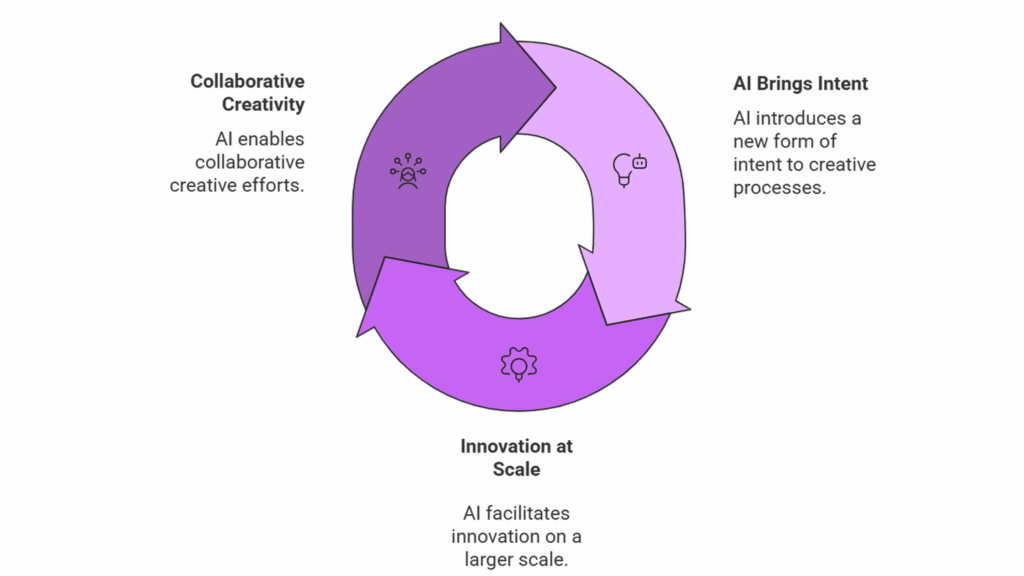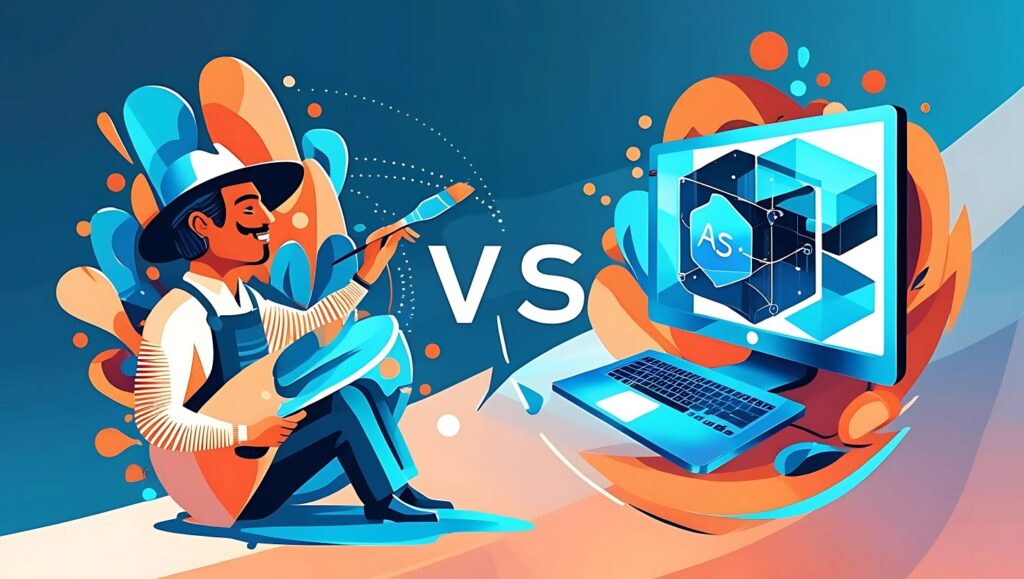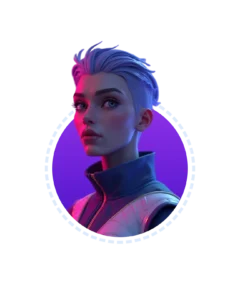For decades, creativity has been seen as uniquely human, a spark of intuition, emotion, and originality. But today, artificial intelligence is challenging that belief. AI systems are now generating logos, websites, branding assets, and even fashion concepts. The question is no longer if AI can design, it’s whether it can truly create.
Is it just remixing patterns? Or is a new form of creativity emerging – faster, more data-informed, and infinitely scalable?
This blog explores the line between human imagination and machine-driven design, backed by real data, workflows, and cost analysis.
What Is Creativity in Design?
Before we decide if AI is creative, we need to define what “creative” even means in the context of design.
Human Creativity: Emotion, Intuition, and Purpose
Creativity in design isn’t just about making things look good. It’s about communication, meaning, and emotion. Human designers combine culture, intent, and context to produce work that resonates. A brand logo isn’t just a symbol, it’s identity, history, and future vision in one shape.
Design thinking often involves:
- Emotional storytelling.
- Empathy for user behavior.
- Iterative discovery through failures.
- Cultural nuance and subjective taste.
These are difficult to codify, but essential to what we call creative work.
Algorithmic Creativity: Patterns and Probabilities
AI design tools don’t feel emotions or intuition. They generate content by detecting patterns from massive datasets, millions of logos, ads, posters, and products. Based on that input, they predict what might look original or effective, based on the prompt and learned associations.
In essence, AI uses:
- Statistical analysis of past designs.
- Predictive generation from patterns.
- Stylistic mimicry (based on dataset bias).
- High-speed iteration with no fatigue.
While it doesn’t know what it’s doing, it’s shockingly good at simulating intent, and that’s changing how design teams work.
What AI Excels At in Design?
Before exploring specific strengths, it’s helpful to understand where AI stands on the creative spectrum. Creativity exists in layers, from simple replication to original invention. While AI isn’t fully capable of emotional or purpose-driven creation, it thrives in pattern-based and recombinative tasks.
The following infographic breaks down creativity into layers, from simple mimicry to conceptual innovation, and pinpoints where AI delivers the most practical value in real-world design tasks.

Based on this framework, we can now look at where AI adds the most value in practical design scenarios.
1. Speed and Scale
An AI model can generate ten design variants in under 30 seconds. What once took a human team several days now happens near-instantly, allowing businesses to test, iterate, and deploy content with remarkable speed.
2. Pattern Recognition at Scale
AI sees what humans miss. It can detect subtle trends across billions of data points, such as which color palettes correlate with higher click-through rates in eCommerce or what layout structures outperform others in SaaS landing pages.
3. Cost-Efficiency
No salaries. No fatigue. No delays. AI enables businesses to scale design assets with minimal overhead. Teams can generate hundreds of visuals at a fraction of the traditional cost.
Human vs. AI Design Abilities
| Capability | Human Designer | AI Design Model |
| Original Thought | High (subjective, emotional) | Low (statistical recombination) |
| Speed of Iteration | Medium (hours to days) | Very High (seconds to minutes) |
| Emotional Storytelling | High | Low |
| Aesthetic Consistency | Medium (prone to subjectivity) | High (based on training data trends) |
| Scalability | Low (limited by time/resources) | Very High (unlimited generation) |
| Cultural Context Awareness | High (especially local context) | Low–Medium (depends on dataset) |
| Cost per Deliverable | High (avg. $100–$1500) | Very Low (internal infra cost only) |
The Evolving Nature of Creativity – Rethinking the Role of AI
As AI grows more sophisticated, the debate is shifting, not about whether AI can be creative, but about what creativity means in an AI-augmented world.

Argument 1: AI Brings a New Form of Intent
While AI doesn’t possess human emotions or consciousness, it operates with a different kind of intent: data-driven, goal-oriented, and performance-optimized. Given the right prompt, AI generates with purpose: to convert, to engage, to align with brand tone. That intent may not come from the AI itself, but it’s no less real in its output. In a human-AI loop, intent becomes a shared construct between tool and creator.
Argument 2: AI Isn’t Just Imitation – It’s Innovation at Scale
Yes, AI draws from existing data, but so do humans. All creativity is, in some way, a remix of influences, context, and inspiration. What sets AI apart is its ability to see patterns and combinations that human designers may never consider. This allows for serendipitous originality, not because AI dreams, but because it works at a scale that creates space for newness to emerge.
Argument 3: Creativity Is No Longer a Solo Act
The most compelling creative work today often comes from collaboration, and AI is fast becoming an indispensable creative partner. It amplifies human intuition, accelerates experimentation, and frees up human designers to focus on strategy, storytelling, and emotional nuance. This synergy is pushing boundaries and reshaping what’s possible in design.
Human + AI Design Workflows in Practice
Rather than replacing designers, AI is increasingly becoming a co-creator. Companies are integrating AI into creative workflows to maximize output and minimize time.
How Teams Are Collaborating with AI:
- Concept Generation: AI tools produce 20–30 layout variations instantly. Designers use these as a jumping-off point.
- Brand Consistency: AI models can replicate brand tone, colors, and typography across hundreds of assets with perfect consistency.
- Rapid A/B Testing: AI accelerates visual testing by auto-generating ad variants that are then tested across platforms.
- Localization at Scale: AI generates region-specific designs in multiple languages or cultural styles—without requiring separate teams.
The Cost of Creativity – AI vs Human Design Teams
Design is often seen as a high-touch, high-cost process. But how does AI shift that equation?
Traditional Design Team Cost Structure
| Role | Monthly Salary (USD) | Tools & Software | Output Capacity |
| UI/UX Designer | $5,000 | $200 | 2–3 campaigns/month |
| Graphic Designer | $4,200 | $150 | 10–15 assets/week |
| Creative Director | $7,500 | $300 | Strategy + Oversight |
| Copywriter (Creative) | $3,800 | $50 | 5–8 taglines/week |
Total Monthly Team Cost: ~$20,000–$25,000.
Time to First Deliverable: 5–10 business days.
AI-Powered Design Cost Breakdown
| AI Element | Monthly Cost | Function | Output Capacity |
| Generative Design Model | $100–$300 | Visual asset generation | 100+ assets/month |
| Text Generation Model | $20–$100 | Slogans, ad copy | 500+ variations/week |
| Brand Style Prompting | Included | Ensures tone & visual match | 90% brand consistency |
| Human Oversight (Editor) | $2,000 | Final review + refinement | Across all campaigns |
Total Monthly Cost: ~$2,500–$3,000.
Time to First Deliverable: Same day or next day.
Industry Applications – AI in Action Across Creative Fields
AI’s influence on design is not just theoretical, it’s already reshaping how industries operate creatively. Below is a breakdown of how different sectors are adopting AI in design, along with the measurable outcomes they’re achieving.

Retail & eCommerce
In retail, speed and personalisation are paramount. AI design systems enable brands to generate multiple banner variations, create on-brand visuals instantly, and auto-design product recommendation layouts based on real-time shopper behavior.
What used to take a creative team a week can now be turned around in under 24 hours. With AI, eCommerce brands have reported up to 35% higher conversion rates through visually-optimised A/B testing, delivered at a fraction of the cost.
Media & Entertainment
For media companies and streaming platforms, AI design tools streamline everything from promo posters to dynamic trailers. By training AI models on existing brand assets, teams can generate teaser graphics and video snippets within hours.
Production timelines for campaigns have dropped by over 70%, with studios now achieving more consistent visual tone across franchises using prompt-aligned AI models. The creative bandwidth this frees up allows human designers to focus more on narrative and emotional resonance.
SaaS and B2B Tech
In the fast-paced world of tech, UI/UX needs to evolve quickly. AI is increasingly used to auto-generate landing pages, concept mockups, and onboarding flows from a simple prompt or wireframe sketch. This allows teams to prototype, test, and iterate with exceptional speed, cutting MVP development time in half.
AI also powers the rapid creation of branded infographics and client-facing visuals from raw datasets, enhancing both efficiency and professionalism in stakeholder communication.
Healthcare & Wellness
Healthcare providers are leveraging AI design to simplify complex medical content into digestible visual formats. Patient education materials, appointment reminders, and even compliance graphics are now being created by AI systems fine-tuned for regulatory language and brand alignment.
These visuals have proven to increase patient comprehension and trust, while significantly reducing production time and overhead. In a field where clarity and speed matter, AI contributes to better outcomes without compromising on accuracy.
Education & EdTech
EdTech platforms are harnessing AI to scale content delivery and engagement. Learning modules that once required weeks of manual design are now created in days, complete with visuals, animations, and content styling aligned to each learner segment.
AI also supports the automated generation of branded email templates, educational illustrations, and feedback visuals for student performance. This translates to faster time-to-launch and up to three times more content output per course designer.
Conclusion: The Future of Creativity Is Human-AI Collaboration
The debate between creativity and algorithmic logic is no longer a binary choice. AI has shown that it can not only replicate design but also intelligently recombine and generate novel outputs at scale. While it may not yet match the depth of human emotion or intuition, it’s redefining what creativity looks like in a digital-first world.
The most powerful outcomes emerge when AI supports human intent. Designers gain bandwidth to explore deeper narratives, brands execute faster with higher precision, and businesses unlock new efficiencies across creative workflows. AI is not replacing creativity, it’s augmenting it.
At NoCrew, we help businesses unlock the full potential of AI in design, turning speed and intelligence into real creative advantage. Our mission is to make AI work for you, not replace you. Get in touch with us.


